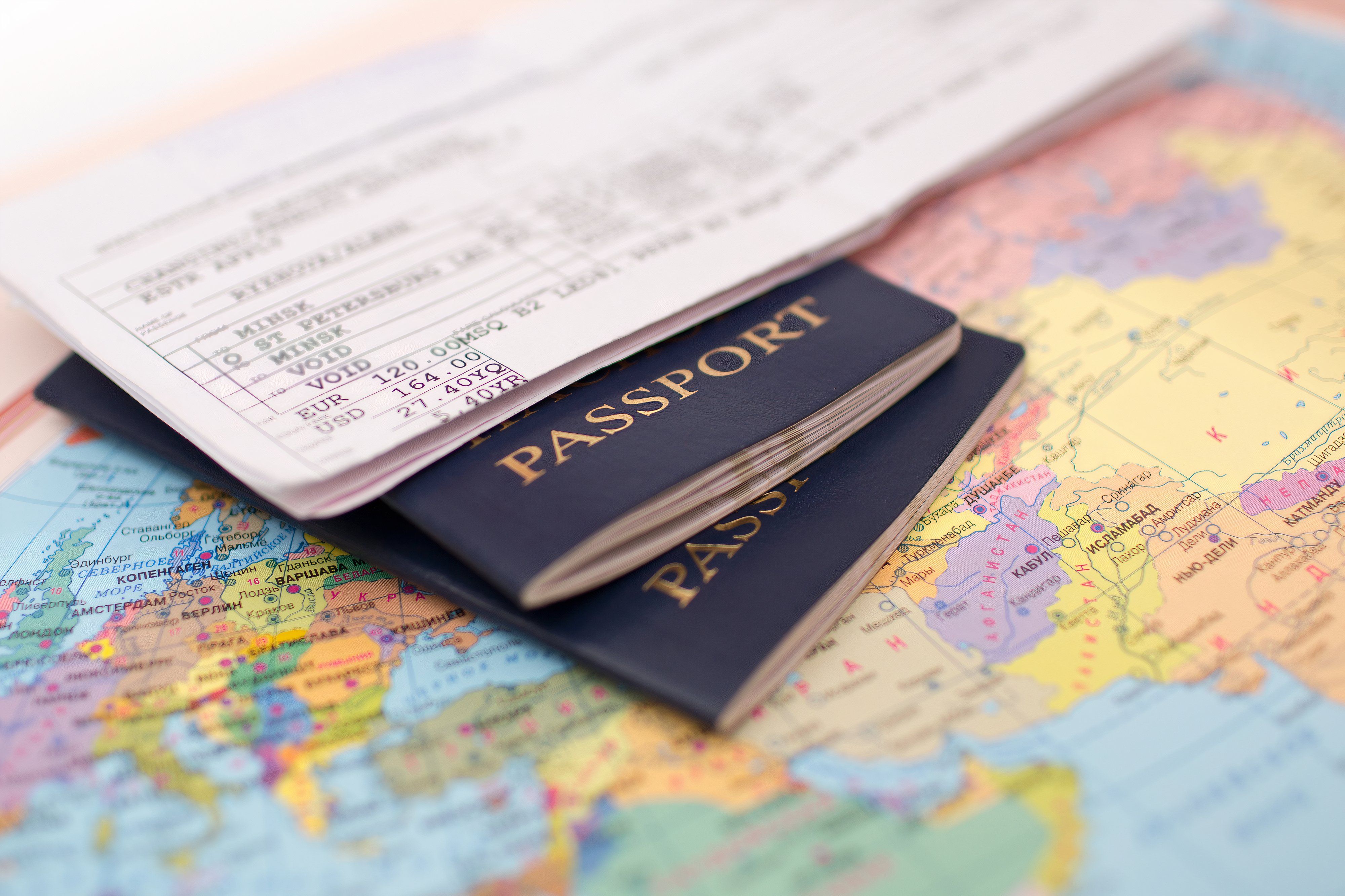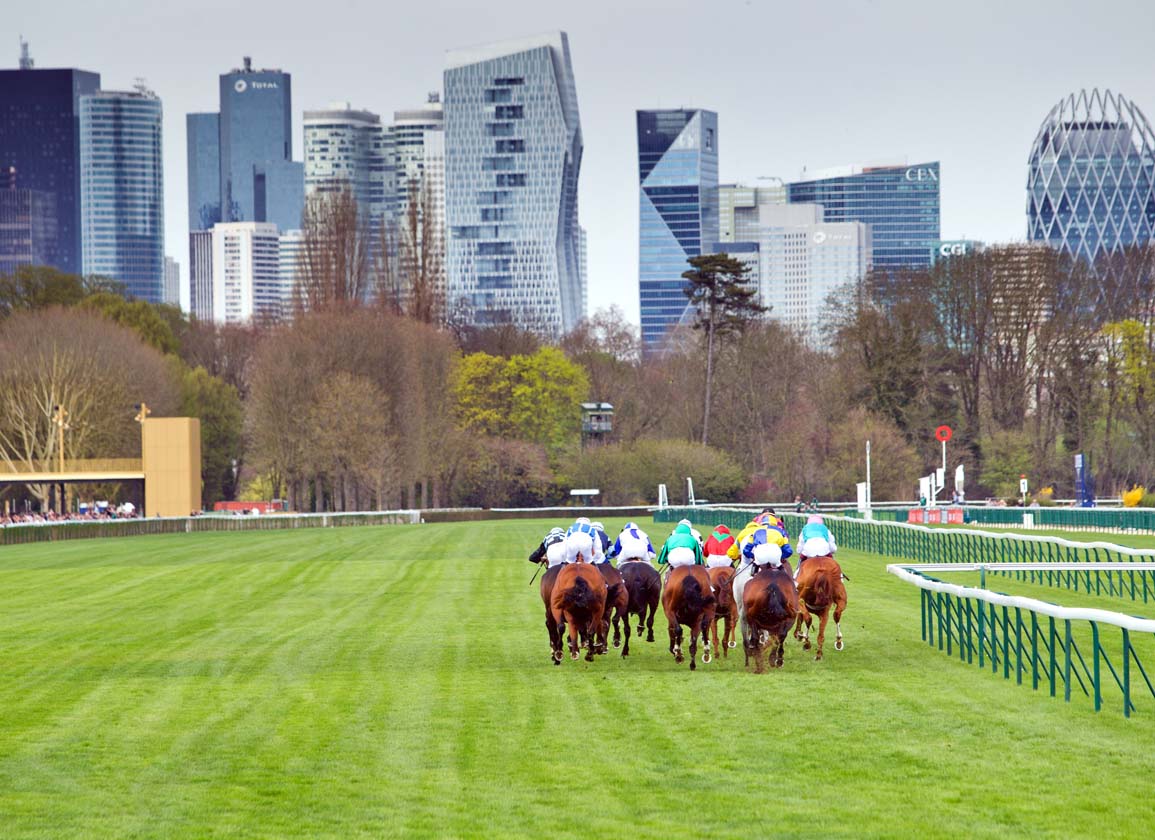World
An award-winning 1,400km hike into the wilds of Eastern Europe
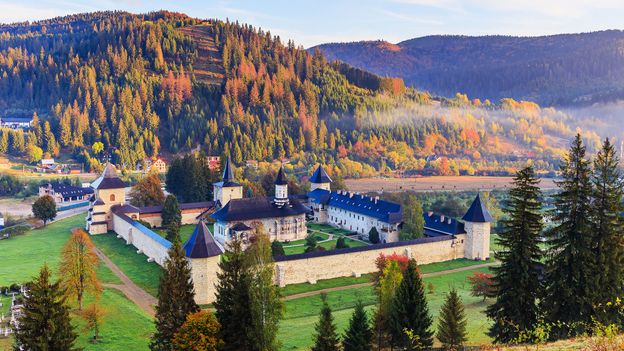
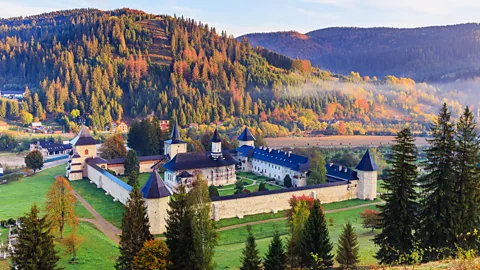 Getty Images
Getty ImagesRunning diagonally across Romania, the Via Transilvanica stitches together some of Europe’s most traditional landscapes and communities with 12 Unesco World Heritage sites.
About a third of the way into a 23km day, I was beginning to get nervous about water. I’d refilled courtesy of the nuns in the Painted Monastery in the Romanian village of Sucevița, but a punishing climb had quickly used up that holy hydration.
Then, after about three hours, the forest faded away and I emerged into rolling high pasture, with a magnificent view of the Bucovina highlands. According to the trail guide, this was the Poiana Ovăzului (Oat Meadow) summer grazing, and where there were animals, there must be water. But although there were a couple of wooden shepherds’ huts in the distance, there was no sign of any livestock.
I turned left following the trail, and after a while it dipped into a green cleft in the ridge, harbouring a couple more substantial buildings along with a makeshift shelter that had clearly been put there for hikers. Beside it was a tap, with “apa potabile” (“drinking water”) written on the fence. As I gratefully refilled, Cosma appeared, a big-bellied shepherd with a gap-toothed grin. He gesticulated at the shelter: “Sit, rest.” So I did, gratefully, thanking him for the water, but he was already producing a bottle of homemade apple brandy. It was barely 11:00, though clearly for him it was already palinka-o-clock.
I protested, but Cosma was indicating that a glass or two would aid digestion. I was about to say that my digestion was unbothered, when a plate of pork fat, sheep’s cheese and raw onions appeared, courtesy of Cosma’s elderly mother.
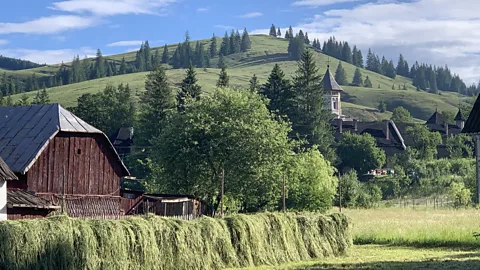 Andrew Eames
Andrew EamesIt would have been churlish not to eat, drink – and make a little donation. It’s not often that you get offered hospitality by a shepherd and his mother at 1,120m in the Carpathian Mountains. A couple of shots later and a couple of miles further on, I found it necessary to have a little lie down.
I was hiking the 1,400km Via Transilvanica, which runs its rugged finger diagonally across Romania from north-east to south-west, mostly through the mountains, forests and villages of the Transylvania region.
How to hike the Via Transilvanica
The route is extremely well waymarked and mapped, mostly along a mix of cart tracks and well-trodden footpaths. The trail guide breaks it down into manageable stages, usually between 15-25km, with detailed route descriptions and recommendations for every overnight stop. As a rule, these guesthouses are owner-run, with only a handful of rooms, and some with camping options too. It is important to book ahead, especially if you want to eat, too. Expect to pay around 120-150 lei (£20-25) per night for accommodation, plus around 50 lei (£8.50) for dinner, and 30 lei (£5) for breakfast.
The route was launched two years ago (it’s already the winner of a Europa Nostra Award recognising outstanding heritage conservation initiatives) and passes through some of Europe’s most traditional landscapes, rich in bears and wolves. It also ticks off 12 Unesco World Heritage sites and brings new life (and revenue) to remote, rural communities – communities that still scythe hay by hand, travel around by horse and cart and eat food they’ve grown themselves.
And crucially the route also connects some 18 different ethnic and cultural regions in the rich tapestry that constitutes modern-day Romania. Which is why it has been dubbed “the road that unites“.
I’d started at its furthest north-easterly point in a region called Bucovina, famous for its Unesco-registered Painted Monasteries – 16th-Century Bible stories painted on exterior monastery walls to teach, and inspire, passersby – and for its wild landscapes. Not for nothing is the region called the “Switzerland of the East”.
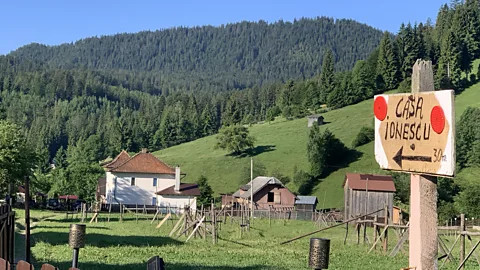 Andrew Eames
Andrew EamesHere the trail’s symbol – an orange T painted on a white circular background – quickly became my friend as I set out from Putna Monastery on gently ascending forestry tracks. This orange thread led me up into beech and conifer forests, waymarked by hand-carved kilometre stones. On my phone I had the trail guide, both with a description of the route and with recommendations of where I should stay at the end of each stage. I was alone, but I felt far from lost.
My first night was spent at a guesthouse in Sucevița, site of monastery number two, and homeland of Ukrainian-origin people called Hutsuls, where my host Cristina filled me up with meat and potatoes.
In the village of Vatra Moldoviţei for my second night, a stone’s throw from monastery number three, my host Doina prepared a leg from one of her own chickens, almost unrecognisable in texture and colour from the supermarket variety. In the Habsburg era (1690-1918) the village had a German-origin population, and Doina’s German was nearly fluent.
Monastery aside, Vatra Moldoviţei is also known for its ancient narrow-gauge steam-hauled railway, originally used for logging, but unfortunately (for me) now only operating at weekends.
My third night was in Sadova, where Elena and I communicated through Google Translate and with the help of her son Ioan, who was the local Orthodox priest. She served me trout with polenta and curd cheese, topped off with fruit-filled pancakes.
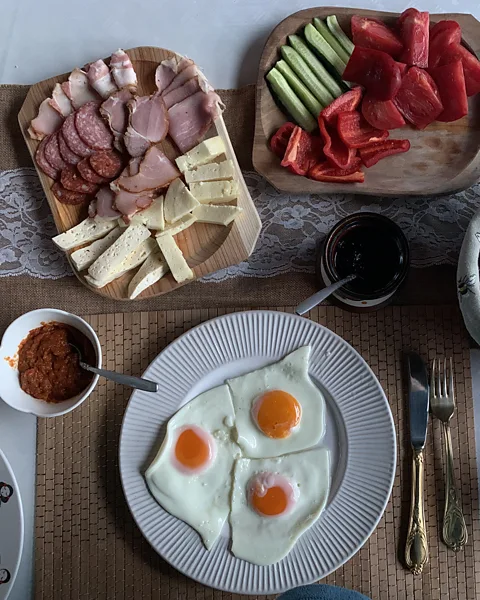 Andrew Eames
Andrew EamesEach day I started out after a hearty breakfast while the sun was still young. Setting off through villages, I was watched over by storks on rooftop chimneys, dogs bellyaching at the stranger as I passed. Each village house had its vegetable patch, orchard and chickens. Stooks of hand-cut hay haunted the lowland pastures like woolly ghosts, beyond which started magical beech woods, usually with a Via Transilvanica sign warning of bears “active after dusk”.
Stay safe
There are lots of warning signs about bears in woodland areas, although you’re very unlikely to come across one. Most bear activity is at dawn or dusk, so if you are on the trail at that time, make plenty of noise particularly when going through heavy undergrowth. A more common hazard is fierce shepherd dogs, trained to defend sheep against wolves. It’s advisable to carry a stick through sheep-grazing areas.
Romania’s Carpathian Mountains are home to the densest brown bear populations in Europe. Fortunately, I didn’t see any. I took to talking to myself out loud, just in case. I did spot some deer in the distance, but mostly it was just me in woods and meadows, listening to bird song and breathing in great lungfuls of unblemished air.
Four days in, having sampled enough of Bucovina, I made contact with the trail’s creators, an NGO called Tășuleasa Social. The organisation is spearheaded by two Romanian brothers, Tibi Uşeriu, a hardcore adventurer, and his brother Alin, who now runs it along with his partner Anna Szekely. Their headquarters is a little campus of buildings on a hilltop near Bistrița that provides accommodation, advice and catering to hikers, some eight days into the hike. Over lunch with Szekely, the executive director and author of the trail guide, I asked how it all started.
“Alin and I both did [Spain’s] Camino de Santiago and loved it,” she said. “But then we realised that our homeland, with all of our different ethnicities, each with their own food and traditions, had more to offer both touristically and culturally.” So the route was planned, and all the village mayors were contacted.
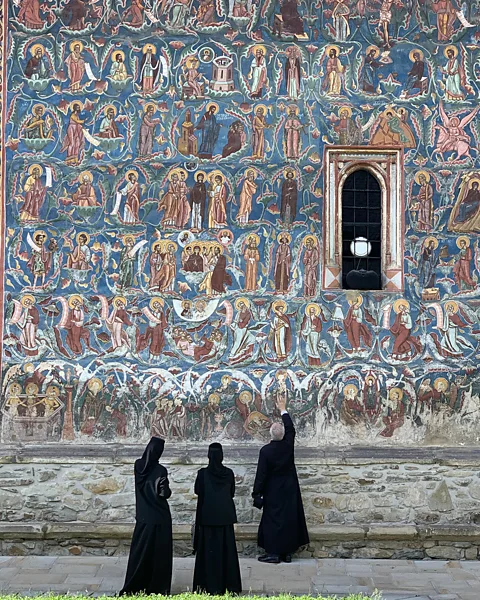 Andrew Eames
Andrew Eames“So far we’ve had 35,000 hikers in the first two years, 80% Romanian, but in time, I reckon we’re going to get 250,000 a year,” said Szekely. “It has huge potential. We see it as a present for the people. Something that will allow villages to develop their own businesses.”
And the bears, were they a big problem? “No, no one has had a bad encounter,” she said. “So far, only one dog bite from what we know.”
Not long after my Bucovina experience, I returned to Transylvania, but this time to hike the more southerly Saxon section of the trail to explore the cultural differences for myself. I did a two-day hike starting in Saschiz, also Unesco listed, this time for its fortified church, and ending in Sighisoara, famous for its Vlad Dracul – that’s Dracula to you and me – connections.
It was also more sociable. In Saschiz I stayed at a guesthouse run by Anca, a great advocate of the trail, and shared my dinner table with two hikers from Moldova. Next day, climbing out of Saschiz up past its 600-year-old fortress, swapping beechwoods with pastures pebble-dashed with flocks of sheep, I could hear them up ahead, playing loud songs via their mobile phones to scare away the bears.
There were four more hikers in my next stop, too. In a guesthouse run by Radu and Andrea in the village of Şapartoc, we all shared a hearty meal of roast pork with sour cream washed down by quantities of homemade palinka.
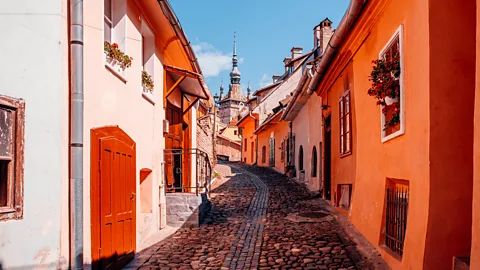 Getty Images
Getty ImagesŞapartoc is a Hungarian-origin village, much more scattered in layout and much more rundown than Saschiz. Radu told us he had bought his dilapidated property many years earlier on a whim, for just €2,000 – money he raised from selling his motorcycle. For years the house had been just a weekend DIY hobby, but then along came the Via Transilvanica. Now it was a fulltime occupation.
And that’s what the Via Transilvanica has done. It has created bonds between people and made business opportunities where before there had been none. In other words, it’s an outstanding conservation heritage initiative, and very deserving of that Europa Nostra award.
Slowcomotion is a BBC Travel series that celebrates slow, self-propelled travel and invites readers to get outside and reconnect with the world in a safe and sustainable way.










